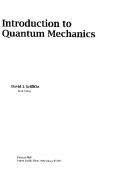Interchange 4thEd CEFR Introduction
This document was submitted by our user and they confirm that they have the consent to share it. Assuming that you are writer or own the copyright of this document, report to us by using this DMCA report button.
called Waystage, Threshold, and Vantage (roughly corresponding to Elementary, Intermediate, and Upper Intermediate). The Threshold series was followed in 2001 by the publication of the Common European Framework of Reference, which describes six levels of communicative ability in terms of competences or “can do” statements: A1 (Breakthrough), A2 (Waystage), B1 (Threshold), B2 (Vantage), C1 (Effective Operational Proficiency), and C2 (Mastery). Based on the CEFR descriptors, the Council of Europe also developed the European Language Portfolio, a document that enables learners to assess their language ability and to keep an internationally recognized record of their language learning experience.
Interchange Fourth Edition and the Common European Framework of Reference The table below shows how Interchange Fourth Edition correlates with the Council of Europe’s levels and with some major international examinations. CEFR
Council of Europe
Cambridge ESOL
IELTS
TOEFL iBT TOEIC
Level Intro
A1
Breakthrough
120+
Level 1
A2
Waystage
225+
B1
Threshold
Interchange
Level 2 Level 3
KET (Key English Test)
4.0–5.0
57–86
550+
PET (Preliminary English Test)
Passages Level 1
B2
Vantage
FCE (First Certificate in English)
5.5–6.5
87–109
785+
Level 2
C1
Effective Operational Efficiency
CAE (Certificate in Advanced English)
7.0–8.0
110–120
490+ (Listening) 445+ (Reading)
Sources: http://www.cambridgeesol.org/about/standards/cefr.html http://www.ets.org/Media/Research/pdf/CEFR_Mapping_Study_Interim_Report.pdf http://www.sprachenmarkt.de/fi leadmin/sprachenmarkt/ets_images/TOEIC_Can-do-table_CEFR_2008.pdf
Introduction
xxvii

Related documents
1 Pages • 327 Words • PDF • 325.1 KB
329 Pages • 88,570 Words • PDF • 15 MB
250 Pages • PDF • 4.1 MB
421 Pages • 128,502 Words • PDF • 3.3 MB
304 Pages • PDF • 292 MB
160 Pages • 42,988 Words • PDF • 3 MB
292 Pages • 114,484 Words • PDF • 3.2 MB
408 Pages • PDF • 13 MB
723 Pages • 351,365 Words • PDF • 6.1 MB
322 Pages • 114,195 Words • PDF • 4.2 MB
265 Pages • 89,736 Words • PDF • 1.2 MB
925 Pages • 318,159 Words • PDF • 16.3 MB











